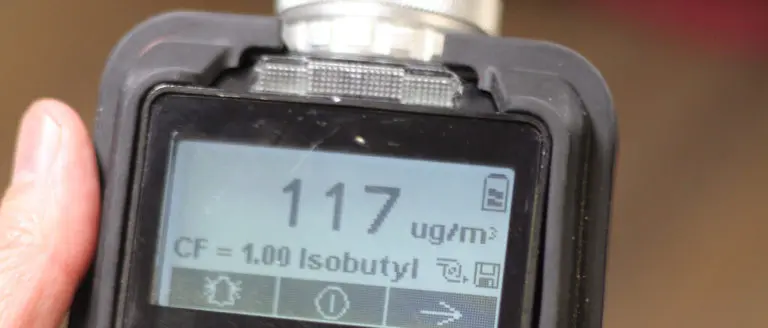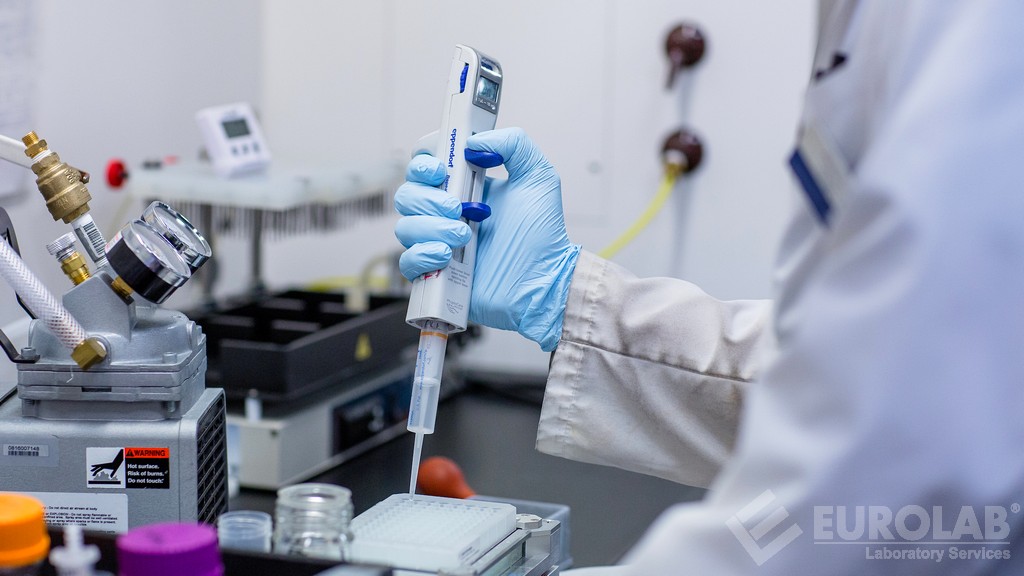Stormwater VOC Residue Testing
The need to ensure environmental compliance and protect public health has never been more critical. Stormwater runoff can carry a wide range of pollutants, including volatile organic compounds (VOCs), which are harmful substances that vaporize at room temperature. This service focuses on the comprehensive testing of volatile organic compounds in stormwater residues using advanced analytical techniques to determine their concentrations and identify potential sources. The primary objective is to help regulatory bodies, quality managers, compliance officers, R&D engineers, and procurement professionals meet stringent environmental standards.
Our laboratory employs state-of-the-art instrumentation such as gas chromatography-mass spectrometry (GC-MS) and thermal desorption-gas chromatography/mass spectrometry (TD/GC-MS) to accurately measure VOCs in stormwater samples. These methods are sensitive enough to detect even trace levels of pollutants, ensuring that no harmful compounds go undetected.
The process begins with proper sample collection from various sites, followed by meticulous preparation and preservation techniques to prevent degradation or alteration of the sample's integrity. Once collected, the samples undergo rigorous analysis using established international standards like ISO 17025 for laboratory accreditation, ensuring high-quality results. After processing, detailed reports are generated that provide comprehensive data on VOC concentrations along with any necessary recommendations.
Stormwater management is a key component of sustainable urban development. By accurately measuring the presence and quantity of VOC residues in stormwater runoff, we can identify areas where improvements are needed. This information helps stakeholders make informed decisions about pollution control measures or adjustments to existing infrastructure. Properly addressing these issues not only mitigates environmental risks but also enhances overall public safety.
Our commitment to excellence extends beyond just providing accurate test results; it includes offering expert guidance on best practices for sample collection, storage, and handling throughout the entire lifecycle of a project involving stormwater management. We understand that every organization has unique needs when it comes to meeting regulatory requirements related to VOCs in stormwater residues.
Benefits
Accurate detection and quantification of volatile organic compounds (VOCs) present in stormwater runoff offer numerous advantages for various stakeholders involved in environmental protection efforts:
- Regulatory Compliance: Ensures adherence to local, national, and international regulations concerning air quality and water pollution.
- Data-Driven Decision Making: Provides valuable insights into the effectiveness of current stormwater management practices or potential areas requiring improvement.
- Health Protection: Helps prevent exposure to hazardous chemicals through improved understanding of pollutant transport mechanisms within urban environments.
- Sustainable Development: Encourages implementation of green infrastructure solutions designed specifically for reducing pollutant loads on stormwater systems.
The ability to track changes over time allows organizations to measure progress towards sustainability goals while identifying opportunities for continuous improvement. Regular monitoring also ensures compliance with evolving regulatory requirements and promotes long-term environmental stewardship.
Customer Impact and Satisfaction
By leveraging our expertise in stormwater VOC residue testing, customers experience enhanced operational efficiency, reduced risk exposure, and improved reputation. Our services contribute significantly to achieving compliance with regulatory frameworks such as the Clean Water Act (CWA) in the United States or similar legislation worldwide.
| Customer Group | Impact | Satisfaction Indicator |
|---|---|---|
| Regulatory Bodies | Ensure ongoing compliance with strict environmental standards. | Evidence of continuous improvement through periodic audits and inspections. |
| Quality Managers | Promote consistent quality control processes across all departments responsible for water management activities. | Positive feedback from internal audits and external reviews conducted by independent third parties. |
| R&D Engineers | Gain valuable insights into new technologies aimed at reducing pollutant emissions during rain events. | Publications in peer-reviewed journals highlighting successful implementations of innovative solutions based on test results. |
| Procurement Professionals | Select suppliers who meet stringent environmental criteria, thereby enhancing the overall sustainability profile of their supply chain. | Long-term partnerships established with preferred vendors demonstrating reliability and trustworthiness. |
In summary, our testing services play a pivotal role in supporting customers' strategic initiatives aimed at promoting sustainable practices while minimizing negative impacts on the environment. Through precise measurements and interpretation of VOC levels in stormwater residues, we empower decision-makers to take proactive steps towards achieving their goals.
Use Cases and Application Examples
| Use Case | Description | Application Example |
|---|---|---|
| Urban Planning | Determining the impact of urban development projects on local water bodies. | A city plans to construct a new highway near an industrial park; before construction begins, they commission our laboratory to assess baseline VOC levels in nearby streams. |
| Industrial Operations | Monitoring emissions from manufacturing facilities during periods of heavy rainfall. | An electronics manufacturer installs rainwater collection systems but wants reassurance that these won't introduce new contaminants into local ecosystems. They request our testing services to monitor the system's performance over several months. |
| Municipal Water Treatment Plants | Identifying sources of contamination in treated wastewater discharged during storm events. | A municipal water treatment plant notices unusual spikes in certain VOCs after heavy rains. Our team conducts targeted testing to pinpoint the exact cause and suggest corrective actions. |
| Sustainable Cities Initiative | Evaluating green infrastructure projects like bioswales or permeable pavements for their effectiveness. | A metropolitan area launches a pilot project involving extensive use of green roofs. Our laboratory provides periodic testing to evaluate the reduction in VOC concentrations attributable to this initiative. |
| Environmental Impact Assessments (EIAs) | Assessing potential impacts on aquatic life due to proposed construction activities. | A developer proposes building a large shopping mall adjacent to a lake. To comply with EIAs, our team performs extensive VOC monitoring around the site before and after completion of the project. |
| Post-Project Evaluation | Evaluating the long-term effectiveness of implemented mitigation strategies post-construction. | A company builds a new wastewater treatment facility. After operation for five years, they hire us to evaluate its performance regarding VOC reduction compared to pre-treatment levels. |
| Corporate Social Responsibility (CSR) | Demonstrating commitment to reducing environmental footprints through transparent reporting on pollutant reductions. | A multinational corporation commits to reducing its carbon footprint by 20% within five years. Regular VOC testing helps them track progress and communicate achievements to stakeholders. |
These real-world scenarios illustrate how stormwater VOC residue testing supports diverse applications across multiple sectors, ultimately contributing to more informed decision-making processes aimed at protecting both human health and the environment.





